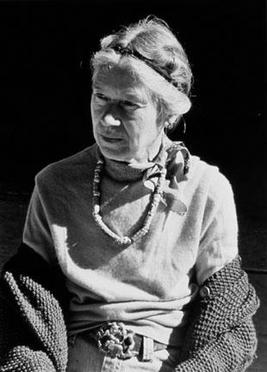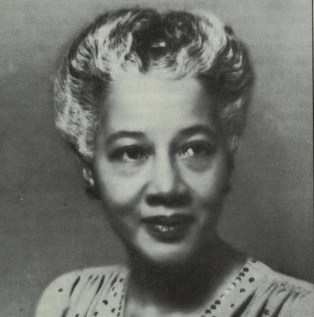Related Research Articles
Canadian poetry is poetry of or typical of Canada. The term encompasses poetry written in Canada or by Canadian people in the official languages of English and French, and an increasingly prominent body of work in both other European and Indigenous languages.
Modernist poetry in English started in the early years of the 20th century with the appearance of the Imagists. In common with many other modernists, these poets wrote in reaction to the perceived excesses of Victorian poetry, with its emphasis on traditional formalism and ornate diction. In many respects, their criticism echoes what William Wordsworth wrote in Preface to Lyrical Ballads to instigate the Romantic movement in British poetry over a century earlier, criticising the gauche and pompous school which then pervaded, and seeking to bring poetry to the layman.

Irving Peter Layton, OC was a Romanian-born Canadian poet. He was known for his "tell it like it is" style which won him a wide following, but also made him enemies. As T. Jacobs notes in his biography (2001), Layton fought Puritanism throughout his life:
Layton's work had provided the bolt of lightning that was needed to split open the thin skin of conservatism and complacency in the poetry scene of the preceding century, allowing modern poetry to expose previously unseen richness and depth.
Louis Dudek, was a Canadian poet, academic, and publisher known for his role in defining Modernism in poetry, and for his literary criticism. He was the author of over two dozen books. In A Digital History of Canadian Poetry, writer Heather Prycz said that "As a critic, teacher and theoretician, Dudek influenced the teaching of Canadian poetry in most [Canadian] schools and universities".

Elsa Gidlow was a British-born, Canadian-American poet, freelance journalist, philosopher and humanitarian. She is best known for writing On a Grey Thread (1923), the first volume of openly lesbian love poetry published in North America. In the 1950s, Gidlow helped found Druid Heights, a bohemian community in Marin County, California. She was the author of thirteen books and appeared as herself in the documentary film, Word Is Out: Stories of Some of Our Lives (1977). Completed just before her death, her autobiography, Elsa, I Come with My Songs (1986), recounts her life story. It is the first complete-life, lesbian autobiography published where the author "outs" herself and does not employ a pseudonym.
Patrick John MacAllister Anderson was an English-Canadian poet. He was educated at Oxford, where he was elected President of the Union, and Columbia. He taught in Montreal at Selwyn House School from 1940 to 1946 and at McGill University between 1948 and 1950. One of his students at both schools was Charles Taylor.

Jane Heap was an American publisher and a significant figure in the development and promotion of literary modernism. Together with Margaret Anderson, her friend and business partner, she edited the celebrated literary magazine The Little Review, which published an extraordinary collection of modern American, English and Irish writers between 1914 and 1929. Heap herself has been called "one of the most neglected contributors to the transmission of modernism between America and Europe during the early twentieth century."
Ian Stephens was a Canadian poet, journalist and musician from Montreal, Quebec, best known as one of the major Canadian voices in the spoken word movement of the 1990s. Most of his work focused on his experiences living with AIDS.
Sean Horlor is a Canadian film director, film producer, poet, actor, television producer, columnist and blogger.

Homoerotic poetry is a genre of poetry implicitly dealing with same-sex romantic or sexual interaction. The male-male erotic tradition encompasses poems by major poets such as Abu Nuwas, Michelangelo, Walt Whitman, Federico García Lorca, W. H. Auden, Fernando Pessoa and Allen Ginsberg. In the female-female tradition, authors may include those such as Sappho, "Michael Field", "Marie-Madeleine" and Maureen Duffy. Other poets wrote poems and letters with homoerotic overtones toward individuals, such as Emily Dickinson to her sister-in-law Susan Huntington Gilbert.

Gay pornography is the representation of sexual activity between males. Its primary goal is sexual arousal in its audience. Softcore gay pornography also exists; which at one time constituted the genre, and may be produced as beefcake pornography directed toward heterosexual female, homosexual male and bisexual audiences of any gender.

Nguyễn Ngọc Bích Ngân is a Vietnamese-Canadian singer, songwriter, artist and writer. Beside being a performer, Ngoc Bich Ngan is also a writer and essayist at many Vietnamese national newspapers such as Thoi Bao Tap Chi Ca Dao, Thoi Moi media and many more. She was baptized a Catholic and has the Christian name Martha, St. Therese of the Infant Jesus.
Although same-sex sexual activity was illegal in Canada up to 1969, gay and lesbian themes appear in Canadian literature throughout the 20th century. Canada is now regarded as one of the most advanced countries in legal recognition of lesbian, gay, bisexual, and transgender (LGBT) rights.

Druid Heights was a bohemian community in Marin County, California, USA, founded in 1954 by poet Elsa Gidlow, her partner Isabel Quallo, and carpenter Roger Somers. The community was a popular retreat for various countercultural movements and a meeting place for many figures of the San Francisco Renaissance.
Les Mouches fantastiques was a Canadian underground magazine published between 1918 and 1920. Based in Montreal, Quebec, it is the first known LGBT-themed publication in Canadian and North American history.

Violet Winifred Leslie Henry Anderson, known professionally as V. Henry-Anderson, was a Scottish-born golfer and partner of poet Elsa Gidlow.

Isabel Grenfell Quallo was a Congolese-born British-American domestic worker and community activist known for her involvement in the development of Druid Heights, in Marin County, California. Born in the Congo Free State, she was educated in England and then moved with her mother to Kingston, Jamaica. Marrying at 16, she immigrated with her husband to New York City in 1914. Struggling with racism and her husband's mental illness, she supported her children by working as a domestic and waitress. Through contacts in the theater district, she made the acquaintance of writer Elsa Gidlow, becoming her partner for more than ten years. While living in California, the women worked with builder and jazz musician Roger Somers, and his wife Mary, to create the bohemian community, which would attract many of those involved in the countercultural movements, active in the United States between 1950 and 1970.
Joe Wallace was a Canadian poet, journalist, and communist activist. As a poet, he was briefly affiliated with The Song Fishermen, an informal group of poets from Atlantic Canada. Wallace enjoyed a limited reputation in Canadian literature, but he had a direct influence on better known poets with strong political views, such as Dorothy Livesay and Milton Acorn. From the 1950s until after his death, Wallace was almost certainly the best known Canadian poet in Eastern Europe and China.

J. I. Segal, born Yaakov Yitzchak Skolar, was a Canadian Yiddish poet and journalist. He was a pioneer in the creation of Canadian Yiddish literary journals, and was the foremost proponent of literary modernism in Yiddish Canada. His lyric poetry combines religious and folk tradition, modernist American literary practice, and Canadian landscape and atmosphere.
References
- ↑ Elsa Gidlow, Elsa, I Come with My Songs. Booklegger Publishing, 1986. ISBN 0912932120.
- 1 2 3 4 5 6 7 8 9 10 11 "Elsa Gidlow’s Circle – Roswell George Mills". The Drummer's Revenge, June 1, 2010.
- 1 2 3 4 Faig, Ken. (July 2006). "Lavender Ajays of the Red-Scare Period: 1917–1920". The Fossil. 102 (4), 5–17.
- ↑ Richard Cavell and Peter Dickinson, eds. Sexing the Maple: A Canadian Sourcebook. Broadview Press, 2006. ISBN 1551114860.
- ↑ Advertisement on page 13. Canadian Jewish Chronicle, March 16, 1920.